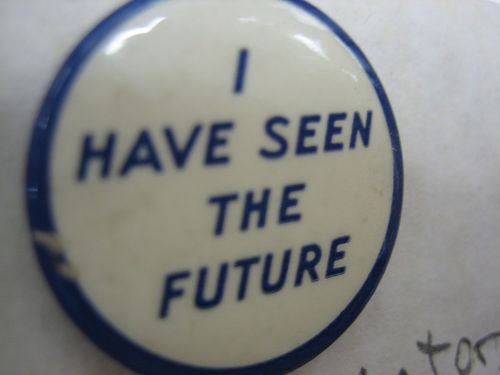An early film special effect using a partly-silvered mirror to reflect and superimpose miniatures or other off-camera devices.
Tag: history
-
The Shuftan process
-
Cinéorama
The original IMAX experience, circa 1900.
-
Panoramic painting
-
In 1903 the Specialty Watch Company Helios Built
In 1903, the specialty watch company Helios built a trial run of miniature Boilerplates. The master of the hoax, an expert on Victorian automata, Paul Guinan, “tried” to “rebuild” one of these. The head resembles gas masks that soldiers wore in World War I, but as ornamental brass. The chest is as tubular as a Franklin stove, but gleaming with Baroque detail. Its knobby limbs were fully articulated , like an armature for special effect stop-motion seventy years later, or a thing in The City of Lost Children. […] For over a century, thousands of boilerplates have come down to us. They wait patiently. Patience has always been a virtue of the boilerplate; and of all hoaxes, including the Wizard of Oz himself. Norman M. Klein, in Building the Unexpected. From The Vatican to Vegas, 2004 p179.
-
L’Aéronaute, the journal of the Société Française de navigation aerieene
Published from around 1868-1911, L’Aéronaute was a chronicle of early air flight in France.
-
Gurney Was Still Haunted by the Baroque Search for
Gurney was still haunted by the Baroque search for a perfect vacuum, by the study of the phlogiston, as part of the philosophy of nature. So, like a mad Jesuit, he built a piano that played glowing bottles filled with burning hydrogen. Norman M. Klein, in Building the Unexpected. From The Vatican to Vegas, 2004 p150
-
Eidophusikon
From Wikipedia (link): The Eidophusikon (Greek: Ειδωφυσικον) was a piece of art, no longer extant, created by 18th century English painter Philip James de Loutherbourg. It opened in Leicester Square in February 1781.
See also this modern day Eidophusikon project for more history and a replica video.
-
Potemkin Villages Were a New Mode of Special
Potemkin villages were a new mode of special effects as power, as the erasure of memory in the late eighteenth century. But the principle evolves beyond one’s wildest imagination. All movie sets are Potemkin villages before they are shot as film. And all wars since 1989 have become Potemkin villages when they appear on global media. And yet, Baroque special effects already pointed toward this problem by 1650, that Baroque illusion served uneasy alliances to cover up the decay and misery of the kingdom. Norman M. Klein, in Scripted Spaces and the Illusion of Power, 1550-1780. From The Vatican to Vegas, 2004 p131

